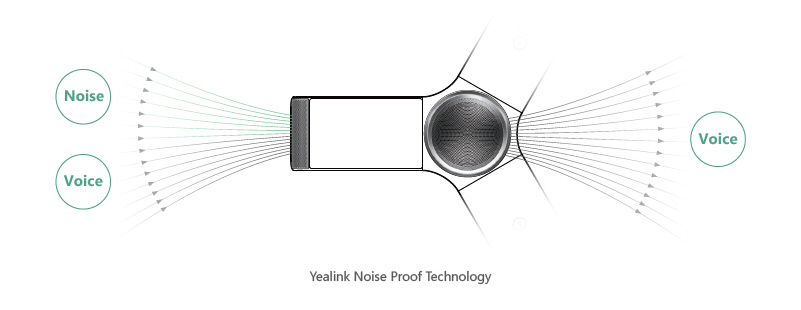Introduction
The digital landscape has transformed the way businesses communicate, making Voice over Internet Protocol (VoIP) technology an integral part of modern communication strategies. Selecting VoIP phones is more than just picking a model; it involves understanding various hardware considerations that can significantly impact your organization’s efficiency, productivity, and overall cost-effectiveness. Whether you’re a small startup or a large enterprise, ensuring you choose the right VoIP phone service can make all the difference in how effectively your team collaborates.
In this article, we’ll delve deep into the essential elements to consider when selecting VoIP phones for your business—highlighting the nuances that often get overlooked. From hardware specifications to features that cater to specific business needs, by the end of this extensive guide, you’ll be well-equipped to make informed decisions about your VoIP phone selection.
Selecting VOiP Phones: Hardware Considerations for Businesses
When embarking on the journey of selecting VoIP phones for your business, there are several critical considerations that will inform your decision-making process. First and foremost, understanding the hardware options available can drastically improve communication and collaboration within your team.
Understanding VoIP Technology
What is VoIP?
Voice over Internet Protocol (VoIP) allows voice communications to be transmitted over IP networks instead of traditional telephone lines. This technology converts sound into data packets that travel over the internet.
Benefits of Using VoIP in Business
- Cost-Effective: Reduced call costs compared to traditional telephony. Flexibility: Easily scalable as businesses grow. Advanced Features: Integration with other services like video conferencing and messaging.
Key Hardware Considerations When Selecting VoIP Phones
1. Types of VoIP Phones
VoIP phones come in various types, each suitable for different business needs:
- Hardphones: Traditional desk phones adapted for VoIP use. Softphones: Software applications installed on computers or mobile devices. Wireless Phones: Ideal for businesses requiring mobility within their premises.
2. Display Quality
A good display enhances usability. Look for features such as:
- Size: A larger screen makes navigation easier. Color vs. Monochrome: Color displays offer better visibility and usability.
3. Audio Quality
Exceptional audio quality is vital for effective communication:
- HD Voice Support: Ensures crystal-clear calls. Noise-Cancellation Features: Minimize background noise during conversations.
4. Number of Lines Supported
Consider how many concurrent calls your business typically handles:

- Single-Line Phones: Suitable for smaller operations. Multi-Line Phones: Necessary for larger teams requiring simultaneous calls.
Choosing Between Wired and Wireless Options
Why Choose Wired?
Wired connections often provide more stable and reliable performance but may limit mobility.
Advantages of Wireless Solutions
Wireless options offer flexibility but may experience interference issues depending on the office layout.
Power Over Ethernet (PoE)
What is PoE?
Power Over Ethernet allows network cables to deliver both data and power to devices without needing additional power outlets, simplifying installation.
Compatibility with Your Existing Infrastructure
Before purchasing new equipment, ensure compatibility with existing systems:
- Network Compatibility: Ensure your router and switches support VoIP traffic efficiently.
Integration Capabilities with Other Tools
Many businesses utilize CRM systems or collaboration tools—selecting a VoIP phone that integrates seamlessly can enhance productivity:
Unified Communication Platforms Customer Relationship Management SystemsUser Interface and Usability
An intuitive user interface reduces training time and increases adoption rates among employees:
- Customizable Settings User-Friendly Menu Navigation
Durability and Build Quality
Investing in robust hardware minimizes replacement costs over time:
- Materials Used Warranty Period Offered
Cost Considerations When Selecting VoIP Phones
While it's tempting to go for cheaper options, consider total cost ownership:
Initial Purchase Price Maintenance Costs Training ExpensesVendor Reputation and Support Services
Research potential vendors thoroughly—look at customer reviews and support services offered post-purchase:
Responsiveness Availability of Technical SupportFuture-Proofing Your Investment
With technology constantly evolving, select devices that can be updated or expanded as new features roll out:
Firmware Updates Expandable FeaturesScalability Needs in Your Business Environment
Consider how easily you can add additional lines or extensions as your company grows; scalability should be a priority in any purchase decision.
FAQs
1. What are some common features I should look for in a VoIP phone?
When selecting a VoIP phone, prioritize features such as HD audio quality, multiple line support, customizable settings, built-in conferencing capabilities, and integration with existing software solutions.
2. Are softphones better than hardphones?
It depends on your business needs; softphones offer flexibility since they run on computers or mobile devices but may lack some advanced features found in dedicated hardphones.
3. How does Power Over Ethernet (PoE) work?
PoE allows network cables to transmit electrical power alongside data signals, enabling devices like IP cameras and phones to operate without needing separate power sources.
4. What is the average lifespan of a good-quality VoIP phone?
Typically, a well-maintained high-quality VoIP phone can last anywhere from 5 to 10 years before requiring replacement due to technological advancements or wear-and-tear.
5. How do I ensure audio clarity during calls?
Choose models with HD voice support and noise-cancellation technologies; also ensure adequate bandwidth allocation on your internet connection to handle multiple calls simultaneously.
6. Can I use my existing network infrastructure with new VoIP phones?
Yes! Most modern VoIP phones are designed to integrate seamlessly with existing network setups; however, checking compatibility beforehand ensures optimal performance.
Conclusion
Selecting VOiP phones involves careful consideration across multiple dimensions—from hardware specifications and features compatibility to budgetary constraints and future scalability needs. The right choice not only enhances internal communications but also fosters improved relationships with clients through clearer voice interactions.
In navigating this complex landscape of choices available today—from hardphones to softphones—it’s crucial https://fox40.com/business/press-releases/ein-presswire/778834370/soundcurve-supports-los-angeles-county-small-businesses-with-voip-phone-systems-for-wildfire-recovery to align these decisions with both immediate requirements and long-term strategic goals of your organization’s communication standards.
By keeping these considerations at the forefront while assessing various options available on the market today, you’ll empower your team with tools that not only streamline workflows but also enhance engagement across every level of interaction within your organization—and ultimately drive success forward!